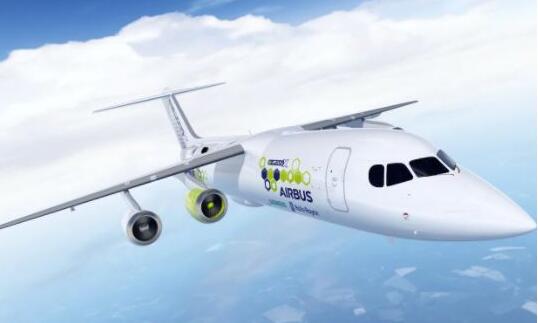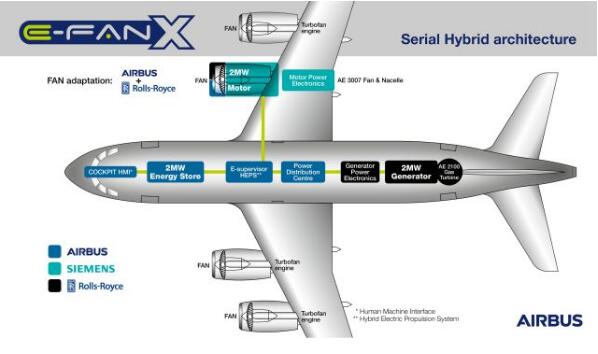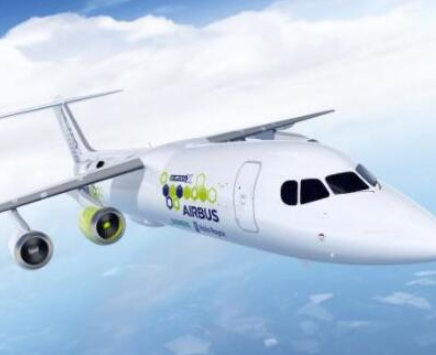Many countries around the world have introduced a new policy of banned fuel vehicles around 2030. It seems that in order to cope with this trend, hybrid narrow-body aircraft is also coming out.
Innovation experiments were first promoted in Europe. Airbus, Rolls-Royce and Siemens announced on Tuesday that they will jointly develop a 50-100-seat single-channel hybrid passenger aircraft. It plans to make its first flight after ground testing in 2020 and launch it in volume by 2030. It is not only representative of the traditional fuel aviation engine manufacturing giants, but also a major advancement in the electrical technology of civil aircraft.
The experimental machine is called "E-Fan X" and will be prototyped on the British Airways BAE 146. One of the four fuel engines will be replaced by a 2 MW electric turbofan engine. Once the system maturity is verified, Another fuel engine will also be replaced by a motor.

(The picture above shows the effect chart of Airbus, screenshot from the British Daily Telegraph)
Among them, Airbus is responsible for the integration of the control architecture of the hybrid electric propulsion system, battery and airframe and flight control system; Rolls-Royce is responsible for the production of turbofan engines, 2 MW generators and electronic equipment; Siemens provides 2 MW electric motors , electronic control unit, frequency converter and energy distribution system, etc., can be described as professional division of labor, each doing its best.

(The picture above shows the effect chart of Airbus, screenshot from the new media Quartz)
The project is based on a hybrid propulsion system jointly developed by Airbus and Siemens last year. The initial goal was to manufacture the two-seat electric aircraft "E-Fan" for pilot trainers and travel operations. The two companies exhibited the air taxi prototype of CityAirbus last year. Siemens also demonstrated a 60-kilowatt electric-powered small aircraft at this year's Dubai Air Show.
The three companies said that the hybrid electric propulsion system is the future of the civil aviation industry, which can effectively reduce greenhouse gas emissions, reduce noise, reduce operating costs, and reduce dependence on fossil fuels. According to the European Commission, the aviation industry should achieve 60% reduction in carbon dioxide emissions, 90% reduction in nitrogen oxides, and 75% reduction in noise by 2050, and it is impossible to meet the standards using only existing technologies.
Rolls-Royce Chief Technology Officer Paul Sein said that by taking advantage of the electric wind, the aviation industry is becoming a new outlet for electrification in the transportation sector. Well-designed electric power can reduce fuel consumption by up to 10%, and cost reductions can also be transmitted to passengers. cost.
According to Mark Counsin, head of the Airbus Flight Demonstration Department, if the aircraft is quieter, the airport can be closer to the city, making it easier for people to travel and effectively innovating the air travel model. Electric aircraft will become a new normal in the future short-distance travel between cities (about an hour), and even seize the market for short-distance railway travel.
The partnership was announced at the Royal Airways Institute in London and is also co-financing with the UK government. If it goes well, most of the research will be done in the UK, helping the UK to maintain its leading position in aviation electrification after the Brexit and to compete with the United States on the other side of the ocean.
The Seattle-based Zunum Aero is supported by Boeing and JetBlue's venture capital and is developing a hybrid aircraft capable of taking 10-50 passengers. The company launched a 12-seat hybrid prototype in October, powered by an electric motor, with a small fuel engine as a backup power, capable of flying about 1,000 kilometers, from Boston to Washington, or from Silicon Valley to Los Angeles.
In addition, Israeli startup News is planning to launch an all-electric aircraft with 6-9 passengers, NASA NASA, Slovenian light aircraft manufacturer Bat Aircraft, and Shenyang Aerospace University Liaoning General Aviation Research Institute, all of which are developing two-seat All electric minicomputer. It not only shows the fierce competition in the electrification industry, but also shows the ambition of Airbus to design large hybrid aircraft.
The three companies will also work with government agencies to design regulatory standards for electric aircraft, which is still a blank. However, François Chopard, co-founder and CEO of the aerospace industry and Starburst Accelerator, told the cutting-edge media Quartz that there are only two directions for the electrification of the aviation industry, either a large hybrid aircraft or a small all-electric aircraft, a large all-electric aircraft. R & D and landing is not realistic.
















 RCCN WeChat QrCode
RCCN WeChat QrCode Mobile WebSite
Mobile WebSite
